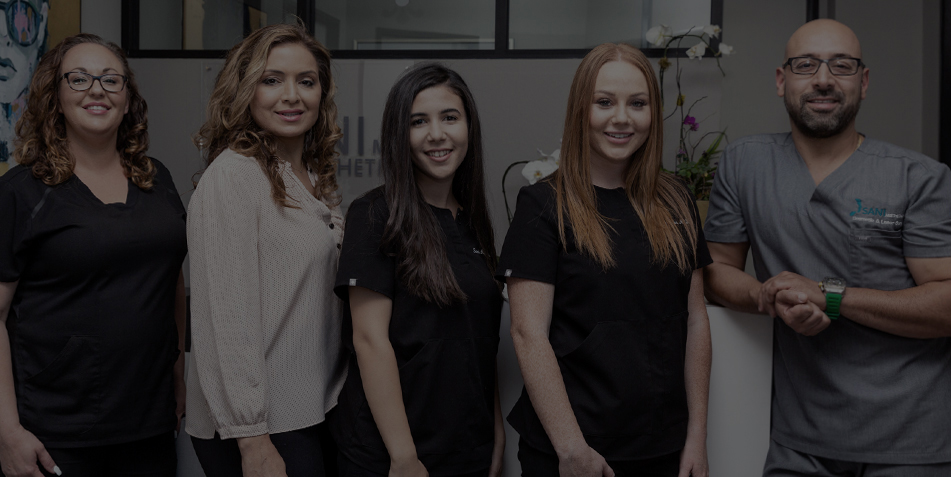
FAQ
FAQ For Hair Loss And Hair Restoration in Los Gatos, CA
Read the answers to the most commonly asked questions on hair restoration, hair loss, platelet-rich plasma, prp, and more.
WHAT ARE THE COMMON CAUSES OF HAIR LOSS?
Not all hair loss is the result of genetics. Certain health conditions can contribute to temporary or permanent hair loss, so it is important to be evaluated by a qualified physician in order to determine the cause. With an accurate diagnosis, it is more likely that you will be able to achieve positive results. Common causes of significant hair loss include:
Androgenic Alopecia – While the patterns of baldness for men and women differ, they both have a common genetic cause. With male pattern baldness, hair loss typically occurs on the top and front of the head. With female pattern baldness, thinning occurs on the top and crown of the head. This thinning in women often starts as a widening of the center hair part that leaves the front hairline unaffected.
Illness or Health Condition – Stress, diabetes, low thyroid activity, nutritional deficiency, cancer, or even the flu can cause temporary hair loss. In many cases, if the health condition is addressed or managed, the hair will regrow.
Trauma – Scar tissue caused by physical injury, burns, or cosmetic surgery can interfere with hair growth, damaging the hair follicles and potentially causing permanent hair loss.
Alopecia Areata – An autoimmune disease in which the body attacks its own hair follicles, resulting in sudden hair loss on the scalp, face, and body. It can be triggered by genetics, stress, or other immune system deficiencies.
Pattern Baldness – Also known as androgenic alopecia, pattern baldness is the most common cause of hair loss that affects both men and women, although men are predominantly affected by the condition. It is mainly caused by hereditary factors and may be gradual and permanent, beginning with a receding hairline or a thinning crown.
Traction Alopecia – Trauma to the hair follicles by wearing tight hairstyles, such as ponytails, braids, or extensions can cause the hair to stop growing.
HOW DOES PRP WORK?
PRP Therapy works by restoring growth factors found in our blood. Human blood contains mesenchymal stem cells and autologous blood products. These elements are essential to the regeneration of scalp tissue. Once the scalp tissue has healed, the hair follicles will restart hair growth.
IS PRP SAFE?
In terms of the safety of this product, PRP is heralded as one of the safest cosmetic hair growth options on the market today, as well as a revolutionary way to stimulate and restore hair growth. You should keep in mind that the product has not gained FDA approval at this time. Currently, PRP is in its early stages of scientific research and subsequent FDA approval.
HOW IS PRP PROCEDURE PERFORMED?
It all starts with a consultation in Los Gatos. During the office visit, Dr Sani will draw blood where it will be spun through a centrifuge, which separates the PRP from the rest of the blood.
Next Dr. Sani will apply a topical anesthesia and inject the concentrated platelet-rich plasma (PRP) into your scalp. The PRP stimulates follicles, which will encourage your hair to regrow.
For the most advanced results, it is suggested you receive PRP therapy four times on a monthly basis. This ensures that the hair follicles remain stimulated and hair growth is progressing as it should be. Dr. Sani calls this his Rapid PRP Technique.
WHAT IS THE SCIENCE BEHIND PRP?
PRP, or platelet rich plasma, contains platelets that are key to stimulating hair follicles and generating hair growth. They mainly target the Dermal Papilla, which is a component of the hair follicle. The platelets promote healing and the formation of new cell growth. In addition, the platelets also accelerate the rate and degree of regeneration so that you can expect to see results in a timely manner. Below is a list of the specific cells within PRP that cause hair growth:
- Platelet-Derived Growth Factor (PDGF) — promotes blood vessel growth, cell replication, and skin formation.
- Transforming Growth-Factor-Beta (TGF-b) — promotes growth of matrix between cells and bone metabolism.
- Vascular Endothelial Growth Factor (VEGF) — promotes blood vessel formation.
- Epidermal Growth Factor (EGF) — promotes cell growth and differentiation, blood vessel formation, and collagen formation.
- Fibroblast Growth Factor-2 (FGF-2) — promotes growth of specialized cells and blood vessel formation.
- Growth Factor (IGF) — a regulator of normal physiology in nearly every type of cell in the body.
HOW EFFECTIVE IS PRP?
Out of all the products that you can find on the market today regarding hair growth, PRP is one of the most effective. Of course, it is important to understand that results may vary and there is no guarantee of success.
Overall, PRP is an effective non-invasive procedure that works well to stimulate the hair follicle for induced hair growth and it reverses hair thinning.
WHO IS A GOOD CANDIDATE FOR PRP?
PRP hair shots are a great option for many men and women that are looking to restore their confidence and regain a lush head of hair. The best candidates for PRP treatment are those that do not have a history of Telogen Effluvium or scarring Alopecia.
Before receiving PRP treatment for hair loss, it is important to conduct careful research and to consult with an experienced physician regarding your choice. Overall, this procedure is a safe and natural option for many individuals.
CONSULTATION
